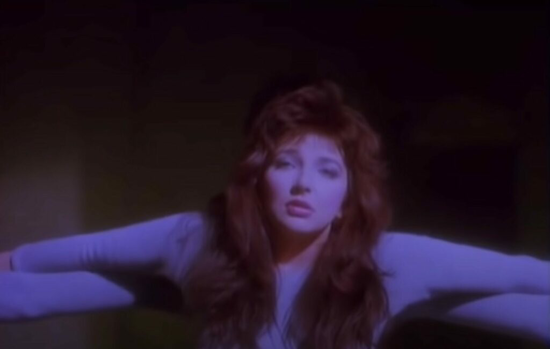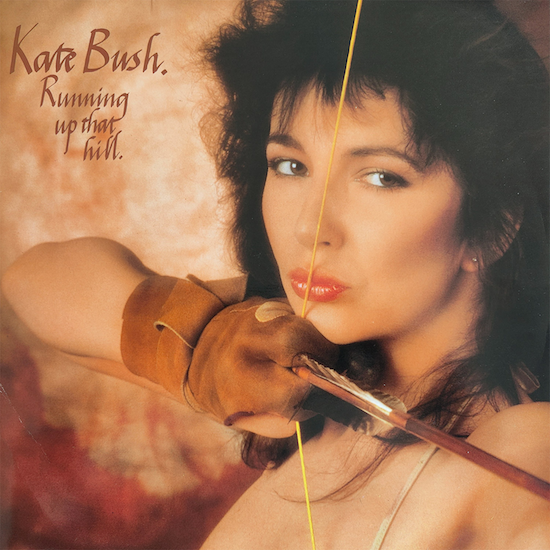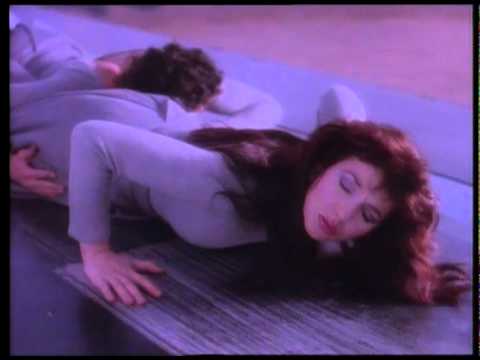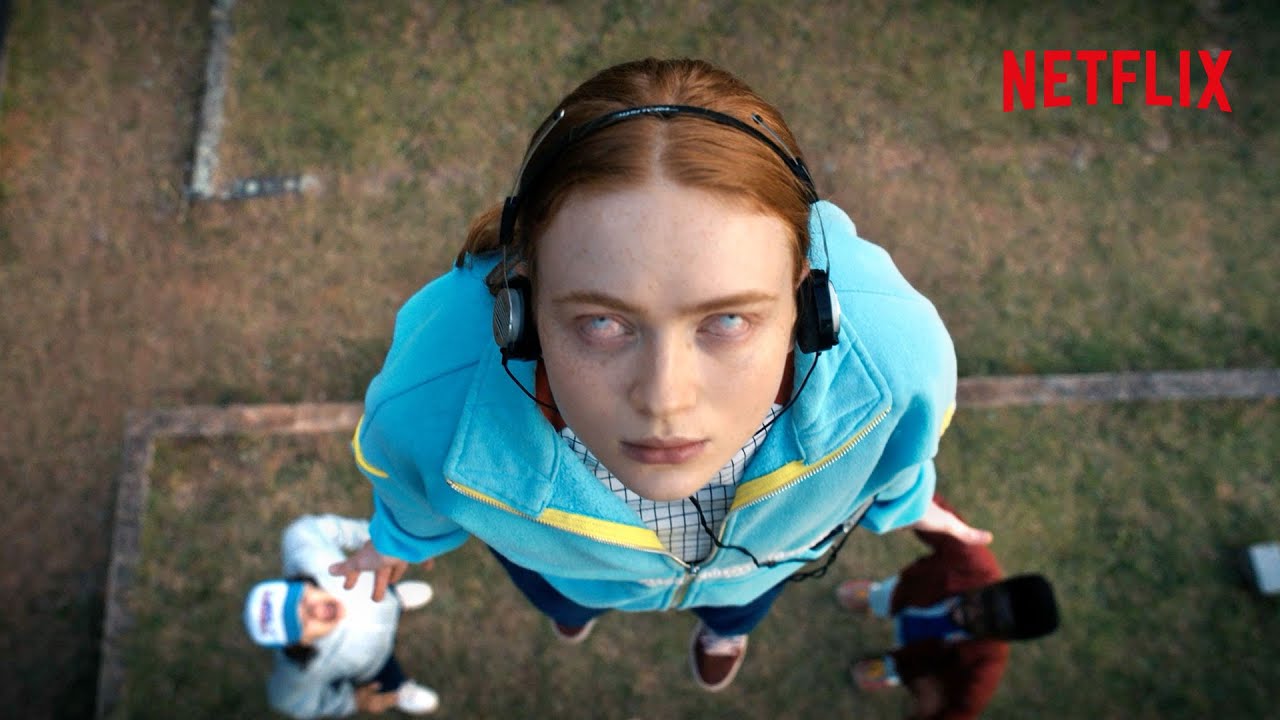"She’s really done it now – she’s gone completely mad." That’s how Kate Bush later assessed the reaction to her fourth album, The Dreaming, upon its September 1982 release. She’d sailed to new creative heights on the ten strange, beautiful songs that make up the record; seized control as producer, delving deeper into sonic details and characters, from a bank robber to Mrs. Houdini. But this masterpiece of wild ambition and fraught emotions had come at several costs.
Endless experimentation and studio-hopping across London had been expensive; becoming the sole producer, just as her music was getting more complex, had been exhausting. She received deserved critical acclaim from some quarters, and the album hit No.3 in the UK charts. But with it came a lot of, in her words, "unfavourable attention"; alienated from the singles market, the corridors of EMI were full of bemused chatter about the now grown up ‘company’s daughter’.
In November, the single ‘There Goes A Tenner’ failed to chart – yet tucked away on its flip side, coded in French, ‘Ne t’enfuis Pas’ hinted at things to come; ‘amour fou’, consistent beats and a searing immediacy. By 1983, Bush sightings were scarce – in a field recreating A Broken Frame‘s cover with its photographer Brian Griffin; promoting The Single File 1978-1983, which would be released early the following year. The only place she could be regularly seen that year was on the walls of Baldwin’s Casuals, in Weatherfield, looking out from a poster of The Dreaming‘s cover, at Elsie Tanner and Vera Duckworth’s daily tribulations on Coronation Street.
Diagnosed with nervous exhaustion by her GP father, she retreated from the media glare of the pop scene, later calling it "bitchy". Rarely off a stage or out of a studio since ‘Wuthering Heights’, she sought "stimulus for a new direction". She left London where "you can’t really breathe", moving in to a 17th century farmhouse in Sevenoaks, Kent. In her absence, rumour-mongers created a fictional Bush; the Lady Lucan, the Greta Garbo of pop. The reality was far more down to earth.
She saw friends, watched films, learnt to drive (buying a VW Polo) and cooked meals. She also got back into dance, training with an American instructor, Dyan Gray, excitedly telling fans in newsletters that 1983 felt just like the pre-fame 1976 when she would dance by day, compose by night.
Crucially, weary of the "creativity-zapping cost" of recording in conventional studios, she built her own, in the neighbouring buildings of her parents’ Kent home, East Wickham Farm. Situated right at the edge of suburbia, East Wickham Farm’s hedges divided Welling’s London overspill and country fields. This was the place that had nurtured her creativity, where childhood’s spontaneous imagination had blossomed into adult genius. She’d sat and written songs there, on a piano given to her father by a professor named Aesop. She’d stretched out on the lion skin rugs and watched the late night BBC2 Saturday movie, read from the bookshelf and heard her brother John Carder recite poetry, while younger brother Paddy played folk on his arcane musical instruments. Now, with the help of her father, she constructed a studio in the barns she’d once daydreamed in, playing an organ with its pedals eaten away by mice. (The barns had already been used as a rehearsal space for her KT Bush Band since the late ’70s.)

If East Wickham Farm, parts of which dated back to the 14th century, seemed like a stepping stone back to an old England, Bush’s studio approached the state of the art. It boasted two 24-track Studer tape machines, linked up to make 48, a Soundcraft mixing desk (eventually replaced by SSL), as well as Fairlight and Emulator samplers, Quantec digital room simulators, and her favourite Neumann mics. The contrast between this portal to the past setting, and this new fangled gadgetry, mirrored the unique alchemy of the first album she’d make there, Hounds Of Love.
Away from the cloistered city, new songs drew inspiration from nature ("watching the elements do their stuff") as well as cinema (The Cruel Sea, Don’t Look Now), paintings (Breughel was a fave) and books she’d bought in the ’70s (Peter Reich’s A Book Of Dreams for ‘Cloudbusting’). The Fairlight became her primary compositional tool (along with the rhythmic foundation of a drum machine). Now the character of its sounds, happy or sad, would be the seed from which a song grew (she cited Brian Eno as one of her favourite synth players during interviews). She also began working straight from the initial demo, meaning the finished master retained that initial inspirational spark no matter how overdubbed and refined it became. With this new approach, one evening in 1983, Hounds Of Love‘s first song was written.
Then-boyfriend, and musical sounding board, Del Palmer programmed a Linn Drum pattern, to which Bush wrote with a Fairlight cello. Inside its sound sprang something soul-searching, animalistic and magisterial, a song then called ‘A Deal With God’. By its single release it would be retitled ‘Running Up That Hill’. Major religious territories wouldn’t play it with its original name, she was told, and "after The Dreaming, I couldn’t be so bloody-minded", although she later regretted the compromise. Direct and urgent, even that Fairlight cello seemed to be trying to communicate something directly to the listener.
By late 1983, she was ready to play demos to Paul Hardiman (the engineer that had been a "breath of fresh air", aiding Bush and Palmer during the final stretch of recording The Dreaming). Straight off working on The The’s Soul Mining, Hardiman was struck by the groove of the new material, particularly when listening to ‘Running Up That Hill’. (He compared it to Cloud One’s ‘Atmosphere Strut’ when talking to biographer Graeme Thomson.) The Hounds Of Love sessions began with Hardiman; musicians adding parts to the demo, including one of Bush’s favourite drummers, Stuart Elliot, supplying thunderous fills to ‘Running Up That Hill”s machine tooled beats. Later, overdubs were laid down by Alan Murphy on guitar and brother Paddy on Balalaika. It was just one example of Hounds Of Love‘s beguiling blend of cutting edge technology and human, emotional playing.
After Hardiman exited, (to work on Lloyd Cole And The Commotions’ Rattlesnakes), other top shelf engineers entered – including James Guthrie (Pink Floyd) and Haydn Bendall, who’d also worked on The Dreaming. With Bendall, she treated the Fairlight sounds with effects, swaddling it in an ageless cocoon of EQ and reverb. Bendall was also startled by her vocal performances, the ferocious power she’d acquired on The Dreaming had now ripened. By June 1985, after a trip to Ireland, writing and recording at Dublin’s Windmill Lane, and a lengthy mix with Brian Tench (Julian Mendelsohn mixed two cuts), Hounds Of Love was complete.
In the summer of 1985, Bush re-emerged. She’d been out of the public eye for three years. Back then, in the hyperactive, costume-changing, style-shifting ’80s, it felt like a lifetime. On August 3, NME ran a Where Are They Now? feature. Two days later, a single hit the shelves; EMI’s first choice had been ‘Cloudbusting’. As with ‘Wuthering Heights’, she called the shots, and opted for ‘Running Up That Hill (A Deal With God)’, that original title safely bracketed off.
Bush stared out from the cover with steely determination, bow in hand, arrow ready to fly. Like an archer setting its sights on a target, this was no mere comeback, but in her brother John Carder Bush’s words, "an act of spiritual, mental and physical focus". (He photographed the image and the moody reverse shot, taken at East Wickham Farm in a room so smoke-machine-filled that it had to be evacuated.)
A steady rhythm took ‘Running Up That Hill’ straight onto the dancefloor. Lofty proposals met it there. A lover yearns to strike a deal with the divine, to swap genders with her partner. Theirs is, for Bush, a love "that’s almost too big for them, with the potential for misunderstanding too great". Surging with optimism as it envisions the impossible, the track strives for that "inaccessible elsewhere", that misty hilltop where differences dissolve and true understanding exists. The gulf between humans had always been Bush’s forte, (the track’s distant balalaika echoing ‘Babooshka”s marital drama), but since ‘Wuthering Heights’, so had the imperious desire to cross it, at all costs. In its own mystical way, ‘Running Up That Hill’ is driven by that very ’80s imperative: Go For It!
The Fairlight is central; that original riff galloping throughout, the reverbed atmospherics bookending the song and those deep chords that tug the heartstrings, while the beat moves the body. Bush’s vocal is combative and sensual. Backing vocals mirror the mixed emotions, yay-yo-ing ecstatically, unleashing battle cries, akin to ‘Kiai!’, the cry made in Japanese martial arts – before Bush learnt dance, she studied karate (Stevie Nicks compared her to a ninja). The imagery is at turns passionate and menacing, thunder in hearts, bullets buried deep. In the orgasmic middle eight, Bush urges her lover to swap and exchange female/male pleasure, moving from traditional sex roles to something approaching the omnisexual (many of the song’s lines could be describing two men flip-fucking). Things intensify in its wake, lightning strikes with real drums, and Murphy’s guitar, all Gilmour-esque ‘feel’ squalls, as if the almighty has responded.
Unease threatens to tilt the radio-friendly axis, voices writhe and wriggle, souls stuck in the purgatory of their lonely skin, begging to break free and merge. The storm calms and a male/female voice sing its last lines, morphed like Bush and dance partner Michael Hervieu in the accompanying video. Kate Bush was going to the disco but it was on her terms, with this maelstrom of a song, conjured from earth and ether; male/female, human/machine, spirit/flesh and light/dark locked in an endless interplay. As with all the best pop music, the immediacy was a Trojan horse carrying an army of subversive ideas.
On its flip-side, she was alone at the piano, singing ‘Under The Ivy’; one of her best-loved B-sides. Seeking refuge, "away from the party", it’s the wallflower to the A-side’s diva, amongst the green and the grey like a gothic heroine. It comes straight from her East Wickham childhood pastorale, candid yet cloaked in secrecy. Here as on the album, the piano’s "rich and resonant", a Grotrian-Steinweg Grand, captured in a live room with an ambient mic, creating an "Erik Satie, alone after the guests have left the ballroom" vibe (Bush’s favourite pianists included Satie, Chopin and Windham Hill’s George Winston).
She performed ‘RUTH’ on Wogan, bow on back, standing before a lectern, Terry visibly awed. It featured repeatedly on Smash Hits‘ singles page, entrancing reviewer Ian Cranna. It sailed to No.3 in the UK singles chart, her biggest hit since ‘Wuthering Heights’. The video, shot at Hammer Horror HQ, Bray Studios (directed by Terry Gilliam’s cameraman, David Garfield), blended modern dance – Bush and partner Michael Hervieu, clad in Japanese Hakama trouser-skirts – and surreal sci-fi.
In September, Hounds Of Love was released to rave reviews, peaking at the summit of the UK albums chart. Bush had managed to have her finger firmly on pop’s pulse while serenely floating above it with this music, its silvery, multi-dimensional sonics tailor-made for the beckoning CD age. While others – Billy Bragg, The Smiths, The Style Council, directly challenged Thatcher/Murdoch’s Britain, Hounds Of Love circumvented it altogether. It was an unabashedly romantic refuge from the awful, materialist ’80s, worming its way into the homes of yuppies and hippies, beloved by everyone from Mel & Kim to John Lydon. Throughout, ‘RUTH’ is easily matched, from title track to ‘Cloudbusting’ to the side-long suite ‘The Ninth Wave’.
One of the many levels to Bush’s genius was a knack of shedding positive light on the darkest of places, turning traditionally negative material inside out. On ‘The Ninth Wave’, the female archetype of the doomed tragic heroine drowning became a survivor. Bush too, had weathered the stormy seas of the music business and was, at 27, art-pop’s eternal grand dame.
It was with ‘RUTH’ that Bush finally broke America. She’d acquired an ever-growing cult following Stateside; The Dreaming received some of its best reviews there, Lionheart and Never For Ever had finally been released, in January 1984; all groundwork for ‘Running Up That Hill”s entry into the top 30. Hounds Of Love did likewise in the album charts. In November 1985, she took a promotional trip to the States, and found lines around the block at Tower Records, on NYC’s 4th and Broadway. ‘Hello Earth”s choral passages even found their way onto Miami Vice the following year, for the Cold War-themed ‘Bushido’ episode.
Bush had been considered too arty and English for American audiences, and resistant to its radio formats. Yet this was also the home of fellow female outliers; Joni Mitchell, Laura Nyro, Patti Smith, Stevie Nicks, and Laurie Anderson. As far back as 1979, Pat Benatar had covered ‘Wuthering Heights’.
Prince was a fan of Hounds Of Love, and future collaborator; in him she even found another male kindred spirit after Peter Gabriel. Like ‘RUTH’, ‘When Doves Cry’ had made pop simultaneously eerie and erotic. Like Bush, Prince also sought an artistic omniscience that eroded gender boundaries, speeding his voice up on ‘If I Was Your Girlfriend’, where Bush would pitch hers down and frequently sing from a man’s POV.
‘RUTH’ and Hounds Of Love’s influence travelled right to the heart of American rock. With Stevie Nicks, she may have shared a witchy romanticism, but it was the wide-open ears of Fleetwood Mac’s Lindsey Buckingham that took notes. It’s all over 1987’s textured, tech-pop classic, Tango In The Night (bigger in the UK than the US) – ‘Big Love’ virtually sped up ‘RUTH”s man/machine-made rhythms; he even sounds like he’s trying to sing like her on the title track’s demo ("I kept the dream in my pocket" could be a line from ‘Cloudbusting’).
‘Running Up That Hill’ has been covered multiple times, by Blue Pearl, Placebo and, recently, Halsey. As with all Bush songs, the original is unbeatable, because like Bowie, Gabriel and Prince, the performance, composition and production are all so impeccably woven into one ecstatic whole.
In 1986, years before Stranger Things, grown-up kids TV embraced ‘RUTH’ when the BBC’s Running Scared not only used it as a theme tune, but featured a title sequence which re-enacted the video. Now, years later, thanks almost entirely to the fourth season of the popular Netflix show, ‘RUTH’ has climbed higher than ever reaching No.1 in multiple countries, including the UK, and the top 5 in the US. The show oddly mirrors Bush’s universe, especially around Hounds Of Love, her fascination with the terror created by scary films, childhood’s land of lost content and "grotesque beauty" (a favourite painting of hers at the time updated Millais’ Ophelia as a cracked doll floating in a sewer). In the video for 1986’s ‘Experiment IV’, that underrated, final, lone new track for her first ever compilation album The Whole Story, she even became a monster that looked like it could have come straight from the series. If ‘RUTH’ is, in Bush’s words, "a talisman" for the Stranger Things character Max, its creator has long been a life-support for many of us.
This song once more finds itself dropping into a bitterly divided world. But in this world polarised by misunderstanding and division, it’s unsurprising that ‘Running Up That Hill”s searing pursuit of empathy and understanding still cuts so deep, and resonates so powerfully.




